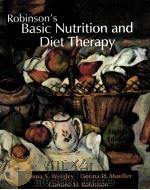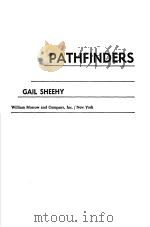《NUTRITION AND DIET THERAPY》
| 作者 | 编者 |
|---|---|
| 出版 | TIMES MIRROR/MOSBY COLLEGE PUBLISHING |
| 参考页数 | 996 |
| 出版时间 | 没有确切时间的资料 目录预览 |
| ISBN号 | 0801655668 — 求助条款 |
| PDF编号 | 811682668(仅供预览,未存储实际文件) |
| 求助格式 | 扫描PDF(若分多册发行,每次仅能受理1册) |

Part OneFoundations of Nutrition3
Chapter 1The Study of Nutrition3
A World View of Nutrition and Health5
Population Expansion and Food Supply5
Major U.S.Health Problems6
The Team Approach to Health Care8
Changing Concepts of Health and Disease8
Human Values8
Social Influences9
Effects of Change on Health Care Practices11
The Study of Nutrition in Education for the Health Professions13
Plan of Study13
Tools for Study15
Results of this Approach to the Study of Nutrition16
To Sum Up17
Questions for Review17
Issues and AnswersIf You’re Not Healthy,It’s Your Own Fault!19
Chapter 2Carbohydrates21
The Nature of Carbohydrates23
Definition23
Classification24
Dietary Fiber29
Types of Fiber30
Physiologic Effects32
Current Research and Popular Practices32
Dietary Recommendations34
Functions of Carbohydrate34
Energy34
Special Functions of Carbohydrates in Body Tissues35
Digestion of Carbohydrate36
Mouth36
Stomach36
Small Intestine36
Absorption of Carbohydrate37
Metabolism of Carbohydrate37
To Sum Up40
Questions for Review40
Issues and AnswersThe Sugar Phobia Syndrome42
Issues and Answers Inequality of Carbohydrates:The Glycemic Index45
Issues and Answers Hypoglycemia48
Chapter 3Lipids51
Health Needs for Fat53
Body Fats53
Food Fats53
Health Problems with Fat53
The Nature of Lipids54
Fatty Acids54
Triglycerides59
Common Chemical Reactions of Fats62
Cholesterol64
Compound Lipids66
Lipoproteins67
Digestion of Fats68
Mechanical Digestion68
Chemical Digestion68
Absorption of Fats,69
Initial Fat Absorption69
Second Stage of Fat Absorption Within the Intestinal Wall70
Final Absorption and Transport of Fat70
To Sum Up71
Questions for Review71
Issues and AnswersThe Dietary Fat Controversy73
Chapter 4Proteins77
The Nature of Amino Acids79
General Pattern and Specific Structures79
The Building of Proteins82
Peptide Linkage82
Arrangement of Peptide Chains83
Types of Protein83
Functions of Protein85
Growth and Tissue Maintenance85
Specific Physiologic Roles85
Available Energy85
Digestion of Protein86
Mechanical Digestion86
Chemical Digestion86
Absorption of Protein87
Active Transport System87
Pyridoxine(Vitamin B6)Cofactor87
Competition for Absorption88
Absorption of Peptides and Whole Proteins88
Metabolism of Protein88
The Concept of Balance88
Protein Requirements90
Function of Dietary Protein90
Metabolism of Protein and Amino Acids90
Digestibility Factor91
Other Factors Affecting Requirement91
Measure of Protein Requirements92
To Sum Up96
Questions For Review96
Issues and AnswersThe Vegetarian Revolution98
Chapter 5Energy Balance101
Energy and Metabolism103
The Concept of Change103
Measurement of Energy103
The Human Energy System104
Energy Cycle104
Energy Balance:Input and Ouptut105
Energy Control in Human Metabolism105
Controlled Energy System:Chemical Bonding105
Controlled Reaction Rates106
Types of Metabolic Reaction107
Energy Expenditure108
Basal Metabolic Needs108
Food Intake Effect111
Physical Activity Needs111
Total Energy Requirements111
To Sum Up114
Questions for Review114
Issues and AnswersEnergy Balance Studies and International Food Policy116
Chapter 6Fat-Soluble Vitamins117
Vitamin A119
Chemical and Physical Nature119
Absorption119
Physiologic Functions121
Vitamin A Requirement123
Food Sources of Vitamin A124
Vitamin D124
Chemical and Physical Nature124
Absorption124
Synthesis124
Physiologic Functions125
Vitamin D Requirement126
Food Sources of Vitamin D127
Vitamin E127
Chemical and Physical Nature127
Absorption130
Physiologic Functions130
Vitamin E Requirement130
Food Sources of Vitamin E130
Vitamin K130
Chemical and Physical Nature130
Absorption131
Physiologic Function131
Vitamin K Requirement133
Food Sources of Vitamin K133
To Sum Up134
Questions for Review134
Issues and AnswersVitamin A Megadoses:Boon or Bust?136
Chapter 7Water-Soluble Vitamins137
Thiamin139
Physiologic Function:Coenzyme Function140
Clinical Effects of Thiamin Deficiency140
Thiamin Requirement140
Food Sources of Thiamin141
Riboflavin141
Physiologic Functions141
Clinical Effects of Riboflavin Deficiency141
Riboflavin Requirement142
Food Sources of Riboflavin142
Niacin142
Physiologic Functions142
Clinical Effects of Niacin Deficiency143
Niacin Requirement143
Food Sources of Niacin143
Pyridoxine(B6)143
Physiologic Functions144
Clinical Effects of Pyridoxine Deficiency144
Pyridoxine Requirement145
Food Sources of Pyridoxine145
Pantothenic Acid145
Physiologic Functions145
Pantothenic Acid Requirement147
Food Sources of Pantothenic Acid147
Biotin147
Physiologic Functions148
Biotin Requirement148
Food Sources of Biotin148
Folic Acid148
Physiologic Functions148
Clinical Problems149
Folic Acid Requirement149
Food Sources of Folic Acid149
Cobalamin(B12)149
Physiologic Functions150
Clinical Problems150
Cobalamin Requirement150
Food Sources of Cobalamin151
Ascorbic Acid(Vitamin C)152
Physiologic Functions152
Clinical Problems155
Vitamin C Requirement156
Food Sources of Vitamin C156
Related Factors157
Lipoic Acid157
Choline157
Bioflavonoids157
To Sum Up158
Questions for Review158
Issues and AnswersVitamin C:Wonder Drug of the ’80s?160
Chapter 8Minerals163
Major Minerals165
Calcium165
Phosphorus172
Magnesium174
Sodium175
Potassium176
Chlorine(Chloride)178
Sulfur182
Trace Elements183
The Concept of Essentiality183
Essential Function183
Deficiency and Requirement185
Iron186
Iodine190
Zinc193
Copper196
Manganese198
Chromium199
Cobalt200
Selenium200
Molybdenum201
Fluorine202
Probable Essentiality203
Silicon203
Vanadium203
Nickel204
Tin204
Cadmium204
Arsenic206
Aluminum206
Boron206
To Sum Up207
Questions for Review207
Issues and AnswersGuidelines for Trace Element Supplementation209
Chapter 9Water and Electrolytes213
Water-Electrolyte Balance215
Body Water Distribution215
Overall Water Balance:Intake and Output215
Forces Influencing Water Distribution217
Electrolytes in Water Balance220
Gastrointestinal Circulation225
Renal Circulation226
Clinical Problems228
Acid-Base Buffer System230
Acids and Bases230
Buffers232
Roles of the Lungs and Kidneys233
Acidosis and Alkalosis234
To Sum Up237
Questions for Review237
Issues and AnswersPrinciples of Oral Rehydration Therapy239
Chapter 10Digestion,Absorption,and Metabolism241
Digestion243
Basic Principles of Digestion243
Digestion in the Mouth and Esophagus244
Digestion in the Stomach246
Digestion in the Small Intestine247
Absorption252
Absorption in the Small Intestine252
Absorption in the Large Intestine(colon)254
Metabolism257
Carbohydrate Metabolism257
Lipid Metabolism261
Metabolism of Cholesterol262
Protein Metabolism263
Interrelationships267
To Sum Up268
Questions for Review268
Issues and AnswersLactose Intolerance:A Case Against Milk Subsidy Programs?269
Part TwoApplied Nutrition in Community HealthChapter 11 Food Habits:Personal Beliefs and Social Influences273
Cultural Influences275
Concept of Culture275
Food in a Culture275
Social Influences276
Concept of Social Organization276
Food and Social Factors277
Psychologic Influences277
Social Psychology:Understanding Dietary Patterns277
Food and Psychologic Factors277
Current Confusions Influencing Food Habits278
Food Misinformation278
Food Faddist Claims280
Dangers of Food Fads280
Groups Vulnerable to Food Faddism281
What is the Answer?281
Food Safety282
Control Agencies285
Changes in Food Habits288
Determinants of Food Choice288
Westernization in the Third World289
Recent Immigrants290
Changes in American Food Patterns293
To Sum Up296
Questions for Review296
Issues and AnswersProposed Changes in FDA Regulations:The Hatch Bill299
Chapter 12Family Nutrition Counseling and Education:Food Needs and Costs301
Family Nutrition Counseling303
Focus:Personal Needs and Goals303
Methods:Nutrition History and Analysis303
Plan of Care303
The Teaching-Learning Process304
Aspects of Human Personality Involved in Learning304
Principles of Learning305
Nutrition Counseling in the Health Care Facility307
Instructor Qualifications310
Food Assistance Programs311
Commodity Distribution Program311
Food Stamp Program312
Child Nutrition Programs313
Nutrition Program for Elderly Persons315
Food Buying Guides316
USDA Food Plans316
Family Food Costs317
The Best Food Buys319
Additional Resources322
To Sum Up323
Questions for Review323
Issues and AnswersPerson-Centered Diabetes Education324
Chapter 13Nutritional Deficiency Diseases327
Malnutrition:World Health Problem329
Hungry People:The Extent of Malnutrition329
The Ecology of Malnutrition330
Force of Interrelated Factors330
Malnutrition Syndromes331
Protein-Energy Malnutrition(PEM)331
Nutritional Anemias335
Hypovitaminosis A338
Endemic Goiter339
Other Vitamin Defiency Diseases340
Other Mineral Defiency Diseases344
Methods of Combating Malnutrition346
Requirements for Solution of the Malnutrition Problem346
To Sum Up347
Questions for Review347
Case StudyThe Story of Kokumo349
Issues and Answers The Far-Reaching Personal and Social Functional Consequences of Malnutrition350
Part ThreeNutrition in Health Care Throughout the Life Cycle355
Chapter 14Nutrition During Pregnancy and Lactation355
Nutrition and the Outcome of Pregnancy357
Background for Change357
Determinants of Nutritional Needs357
Basic Concepts Involved357
Maternal Nutrition358
Physiology of Gestation358
Maternal Nutrient Needs363
Dietary Patterns:General and Alternative366
General Dietary Problems367
Functional Gastrointestinal Problems367
Weight Gain During Pregnancy367
High-Risk Mothers and Infants370
Complications of Pregnancy371
Anemia371
Pregnancy-Induced Hypertension(PIH)372
Clinical Conditions373
Nutrition During Lactation374
Nutritional Needs375
To Sum Up380
Questions for Review380
Case StudyA Baby for the Delgados382
Issues and Answers Drug Use and the Outcome of Pregnancy383
Chapter 15Nutrition for Growth and Development:Infancy,Childhood,and Adolescence385
Growth and Development387
Normal Life Cycle Growth Pattern387
Physical Growth387
Mental and Psychosocial Growth388
Nutritional Requirements389
Energy Needs389
Protein389
Water389
Minerals and Vitamins389
Age-group Needs391
The Stages of Human Growth391
Infancy:Birth to 1 Year392
Childhood400
Adolescence:12 to 18 Years406
To Sum Up410
Questions for Review410
Case StudyA Nutrition Education Program for Adolescents412
Issues and Answers Feeding the Premature Infant413
Chapter 16Nutrition for the Aging and the Aged417
Aging in America419
Psychosocial Development in Adulthood419
Socioeconomic and Psychologic Factors419
The Aging Process422
Biologic Changes422
Individuality of the Aging Process422
Nutritional Needs423
Energy423
Protein424
Vitamins424
Minerals425
The Question of Nutrient Supplementation425
Clinical Needs425
Malnutrition425
Weight Management426
Community Resources427
Government Programs for Older Americans427
Professional Organizations and Resources428
To Sum Up429
Questions for Review429
Case StudyThe Patient With Congestive Heart Failure430
Issues and Answers Can We Eat to Live Forever?431
Chapter 17Nutrition and Physical Fitness433
Energy Sources for Physical Activity435
Muscle Action435
Fuel Sources for Muscle Action436
Oxygen Use and Physical Capacity437
Diet and Exercise439
General Nutrient Needs439
Exercise and Energy442
Nutrition and Athletic Performance442
Athletes and Coaches:A Vulnerable Group442
Hvdration:Water and Electrolytes443
Building a Personal Exercise Program445
Health Benefits445
Assessment of Condition and Exercise Needs445
Types of Physical Activity446
Preparation for Exercise447
To Sum Up448
Questions for Review448
Issues and AnswersThe Winning Edge—Or Over the Edge?450
Chapter 18Nutrition and Weight Management453
Body Composition:Fatness and Leanness455
Meanings and Methods455
Obesity and Health456
Social Images:Fear of Fatness457
Thinness457
Fatness458
Effects of Thin-Fat Images458
Physical Fitness:A New Health Image458
The Problem of Weight Management460
Individual Variances460
Extreme Approaches460
Etiology of Obesity461
Some Possible Answers and a Dilemma465
The Set-Point Theory465
Genetic Evolution466
How to Change the Set-Point466
The Health Model:A Positive,Personal Approach467
General Components467
Behavioral Aspects469
Principles of a Sound Food Plan469
Preventive Approach474
To Sum Up475
Questions for Review475
Case StudyThe Obese Patient With Hypertension477
Issues and Answers The Use and Abuse of Height-Weight Tables479
Part FourNutrition and Clinical Care485
Chapter 19Nutritional Assessment and Therapy in Patient Care485
The Therapeutic Process487
Focus of Care487
Phases of the Care Process487
Nutritional Assessment488
Anthropometric Measures488
Biochemical Tests492
Clinical Observations493
Diet Evaluation495
Analysis and Initial Planning496
The Problem-Oriented Medical Record497
Planning and Implementing Nutritional Care500
Some Basic Concepts500
Managing the Mode of Feeding500
Evaluation:Quality Patient Care501
General Considerations501
Quality Patient Care501
Role of the Nurse501
To Sum Up503
Questions for Review503
Case StudyNutritional Assessment and Therapy for a Patient with Cancer505
Issues and Answers “How Much Should I Weigh?”:A Summary of Methods of Measuring Body Fat506
Chapter 20Drug-Nutrient Interaction509
Drug-Nutrient Problems in Modern Medicine511
Elderly Persons at Risk511
Effects of Drugs on Food and Nutrients511
Drug Effects on Food Intake511
Drug Effects on Nutrient Absorption and Metabolism513
Effects of Food and Nutrients on Drugs517
Food Effects on Drug Absorption517
Food Effects on Drug Distribution and Metabolism518
Vitamin Effects on Drug Action520
To Sum Up521
Questions for Review521
Issues and AnswersThe Calming of America?523
Chapter 21Nutritional Therapy in Diseases of Infancy and Childhood525
The Hospitalized Infant and Child527
Basic Needs of the Hospitalized Child527
Plans for Nutritional Care of the Hospitalized Child528
Special Infant Needs530
Gastrointestinal Problems of Infancy and Childhood532
General Functional Disturbances532
Infantile Diarrhea533
Celiac Malabsorption Syndrome533
Cleft Palate and Cleft Lip538
Genetic Disease538
Genetic Inheritance Concept538
Genetic Control542
Phenylketonuria(PKU)542
Other Disorders of Amino Acid Metabolism545
Galactosemia546
Lactose Intolerance547
Type I,Insulin-Dependent,Diabetes Mellitus549
Childhood Food Allergies549
Underlying Etiology549
Common Food Allergens549
Dietary Management550
Family Education550
Weight Management in Children551
Background Concerns551
Causes of Excessive Weight553
Food Practices During Growth Years554
Dental Caries554
Incidence554
Etiology554
Dietary Implications556
To Sum Up557
Questions for Review557
Case StudyThe Adolescent with Cystic Fibrosis558
Case Study The Child with Phenylketonuria(PKU)559
Issues and Answers Preventing Malnutrition in the Pediatric Ward560
Chapter 22Diabetes Mellitus563
The Nature of Diabetes565
Contributing Causes565
Classification567
The Metabolic Pattern of Diabetes568
Normal Blood Sugar Controls568
Regulatory Pancreatic Hormones568
Metabolic Changes in Diabetes570
General Management of Diabetes570
Diagnosis570
Treatment Objectives571
Principles of Nutritional Therapy571
Care of Type Ⅰ,Insulin-Dependent,Diabetes Mellitus571
Care of Type Ⅱ,Non-Insulin-Dependent,Diabetes Mellitus579
Maturity-Onset Diabetes of the Young580
Special Diet Concerns580
Diet Planning with Food Exchanges581
Planning an Individual Food Pattern581
Planning for Special Needs584
Diabetes Education Program585
Goal:Person-Centered Self-Care585
Content:Tools for Self-Care587
Educational Materials:Person-Centered Standards587
Future Trends in Diabetes Care588
New lnsulins588
Insulin Delivery Systems588
Blood Glucose Self-Monitoring Technique588
To Sum Up591
Questions for Review591
Case StudyThe Patient with Type I,Insulin-Dependent,Diabetes Mellitus593
Issues and Answers Can I Use Fructose in My Diabetic Diet?594
Issues and Answers Alcohol and Diabetes:Do They Mix?595
Chapter 23Gastrointestinal Diseases597
Esophageal Problems599
Reflux Esophagitis599
Hiatal Hernia599
Diverticula600
Peptic Ulcer Disease601
Incidence601
Etiology601
Symptoms and Management602
Dietary Management602
Intestinal Diseases606
General Functional Disorders606
Organic Diseases606
To Sum Up613
Questions for Review613
Case StudyThe Patient with Inflammatory Bowel Syndrome615
Case Study The Patient with an Ulcer616
Issues and Answers Nutritional Aspects of Diarrhea617
Chapter 24Diseases of the Liver and Gallbladder619
Metabolic Functions of the Liver621
Carbohydrate Metabolism621
Fat Metabolism621
Protein Metabolism621
Other Related Functions621
Diseases of the Liver621
Hepatitis621
Cirrhosis625
Hepatic Encephalopathy627
Diseases of the Gallbladder628
Functions of the Gallbladder628
Cholecystitis and Cholelithiasis629
To Sum Up632
Questions for Review632
Case StudyThe Patient with Infectious Hepatitis633
Case Study The Patient with Cirrhosis634
Issues and Answers Nutritional Management of the Alcoholic Patient635
Chapter 25Coronary Heart Disease and Hypertension637
Coronary Heart Disease639
The Problem of Atherosclerosis639
Functional Classification of Lipid Disorders644
Acute Cardiovascular Disease649
Chronic Coronary Heart Disease649
Essential Hypertension652
The Problem of Hypertension652
Blood Pressure Controls653
Principles of Nutritional Therapy655
Coronary Heart Disease and Cardiac Edema655
Hypertension656
Food Plan658
Education and Prevention660
Coronary Heart Disease660
Hypertension660
To Sum Up662
Questions for Review662
Case StudyThe Patient with Myocardial Infarction665
Issues and Answers Is Calcium a New Risk Factor in Hypertension Control?666
Issues and Answers Dietary Fats:How Much is Not Enough?668
Chapter 26Renal Disease671
Physiology of the Kidney673
Basic Renal Functions673
Renal Function in Disease674
Glomerulonephritis675
Etiology675
Clinical Symptoms676
Nutritional Therapy676
Nephrotic Syndrome677
Etiology677
Clinical Symptoms677
Nutritional Therapy677
Acute Renal Failure678
Etiology678
Clinical Symptoms678
Nutritional Therapy679
Chronic Renal Failure680
Etiology680
Clinical Symptoms680
Nutritional Therapy682
Renal Calculi690
Etiology690
Clinical Symptoms693
Treatment693
Nutritional Therapy693
Urinary Tract Infection700
Etiology700
Treatment700
To Sum Up701
Questions for Review701
Case StudyThe Patient with Chronic Renal Failure703
Case Study The Patient with Renal Calculi705
Issues and Answers Renal Disease:Technology vs the Quality of Your Life706
Chapter 27Nutrition and Surgery709
Nutritional Needs of General Surgery Patients711
Preoperative Nutrition711
Postoperative Nutrition711
General Dietary Management713
Special Nutritional Needs for Head and Neck/Gastrointestinal Surgery Patients714
Head and Neck Surgery714
Gastric Resection717
Cholecystectomy720
Ileostomy and Colostomy720
Rectal Surgery723
Burns:Special Nutritional Needs723
Nutritional Support Base723
Stages of Nutritional Care724
Total Parenteral Nutrition:Care of the Malnourished or Hypermetabolic Patient727
TPN Development727
Indications for TPN Use727
Basic Rules for TPN Use728
Nutritional Assessment729
Nutrition Requirements:TPN Prescription731
Preparation of TPN Solutions735
Administration of TPN737
Home TPN for Long-Term Use737
To Sum Up738
Questions for Review738
Case StudyThe Patient with Gastrectomy740
Case Study The Patient with Burns741
Issues and Answers The Challenge of Long-Term TPN Therapy742
Chapter 28Nutrition and Cancer745
Cancer Pathogenesis and Nutrition747
The Cancer Cell747
The Body’s Defense System751
Cancer Therapy and Nutrition753
Surgery753
Radiation753
Chemotherapy754
Nutritional Therapy and Cancer756
Problems Related to the Disease Process756
Problems Related to Cancer Treatment758
Principles of Nutritional Therapy for Cancer758
Nutritional Needs761
Nutritional Management and Cancer762
Enteral:Oral Diet and Nutrient Supplementation763
Enteral:Tube Feeding766
Parenteral Feeding768
To Sum Up770
Questions for Review770
Case StudyThe Patient with Cancer772
Issues and Answers Dietary Guidelines for Cancer Prevention773
Chapter 29Nutrition in Rehabilitation777
Rehabilitation Care:Goals and Methods779
Goals of Rehabilitation779
Methods:The Team Approach in Rehabilitation779
Socioeconomic and Psychologic Factors in Rehabilitation779
Social Attitudes779
Economic Problems780
Living Situations780
Psychologic Barriers781
Special Needs of Older Disabled Persons781
U.S.Population Changes and Disability781
Types of Rehabilitation Needs for the Elderly781
Independent Living Rehabilitation782
Personal Assessment of Needs782
Basic Principles of Nutritional Care in Rehabilitation783
Prevention of Malnutrition783
Restoration of Eating Ability784
Conditions Involving Eating Disabilities784
Limitations in Range of Motion784
Muscular Weakness785
Muscular Incoordination786
One-Handedness786
Activities of Daily Living:Food and Eating in Rehabilitation786
Principles of Nutritional Assessment786
Self-Help Devices787
The Learning Process790
Clinical Problems in Rehabilitation792
Elimination792
Renal Calculi793
Obesity794
To Sum Up795
Questions for Review795
Case Study The Patient with a Cerebrovascular Accident(CVA)796
Issues and AnswersIndependent Living vs the Kindness of Strangers797
Chapter 30Nutrition and Mental Health799
Mental Health Care801
Goals and Methods801
Socioeconomic and Psychologic Factors801
Nutrition in Mental Health Care802
Mental Health Care Facilities802
Levels of Wellness802
Goals of Nutritional Care803
Food as a Therapeutic Tool803
Feeding Problems804
Nutrition and Brain Function805
Central Nervous System805
Clinical Problems808
Behavioral Problems808
Eating Disorders809
Alcoholism813
Mental Retardation815
Delirium and Coma815
Epilepsy816
Organic Brain Syndrome816
To Sum Up817
Questions for Review817
Case StudyThe Patient with Psychiatric Problems819
Issues and Answers Precursor Therapy:Nutrient or Drug?820
Chapter 31Computers in Management of Nutrition Practice821
What Computers Can and Can’t Do823
General Information Management823
Basic Computer System Development823
The Human Factor826
Computer Applications in Nutrition Practice827
Computer System Development828
Clinical Nutrition:Patient Care in the Hospital Setting828
Community Nutrition:Private Practice and Public Health830
Nutrition Education831
Nutrition Research835
To Sum Up837
Questions for Review837
Issues and AnswersBroadening Computer Applications in Nutrition839
Appendixes841
ANutritive Values of the Edible Part of Foods842
B Amino Acid Content of Foods,100 g,Edible Portion876
C Fatty Acid Content of Common Vegetable Oils883
D Relative Ratios of Polyunsaturated Fat and Saturated Fat(P/S Ratio)in Representative Foods883
E Cholesterol Content of Foods884
F Dietary Fiber in Selected Plant Foods885
G Sodium and Potassium Content of Foods,100g,Edible Portion887
H Sodium Levels in Mineral Waters898
I Sodium Levels in Popular Soft Drinks898
J Sodium Content of Popular Condiments,Fats,and Oils899
K Salt-Free Seasoning Guide900
L Caffeine Content of Common Beverages and Drugs901
M Composition of Beverages:Alcoholic and Carbonated Nonalcoholic(per 100 g)901
N Kilocalorie Values of Some Common Snack Foods902
O Nutritional Analyses of Fast Foods904
P Water and Electrolyte Balance Problems:Answers to Chapter 9 Questions for Review909
Q Physical Growth NCHS Percentiles910
R Mid-Upper-Arm Circumference Percentiles(cm)918
S Triceps Skinfold Percentiles(mm)919
T Mid-Upper-Arm Muscle Circumference Percentiles(cm)920
U Normal Constituents of the Blood in the Adult921
V Normal Constituents of the Urine of the Adult923
W Food Guide:Exchange Lists for Meal Planning924
X Tools for Calculating Diets and Planning Meals for Children with Phenylketonuria929
Y Calculation Aids and Conversion Tables937
Z Nutrition and Rehabilitation References and Resources939
Glossary,G1945
References,R1965
《NUTRITION AND DIET THERAPY》由于是年代较久的资料都绝版了,几乎不可能购买到实物。如果大家为了学习确实需要,可向博主求助其电子版PDF文件(由 TIMES MIRROR/MOSBY COLLEGE PUBLISHING 出版的版本) 。对合法合规的求助,我会当即受理并将下载地址发送给你。
高度相关资料
-
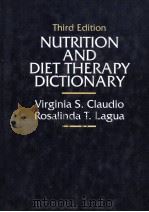
- NUTRITION AND DIET THERAPY DICTIONARY THIRD EDITION
- 1991 VAN NOSTRAND REINHOLD
-

- NUTRITION AND DIET THERAPY
- 1973 THE C.V.MOSBY COMPANY
-

- DIET THERAPY
- 1995 MOSBY YEAR BOOK INC
-

- PHYSICAL CHEMISTRY WITH APPLICATIONS TO BIOLOGICAL SYSTEMS SECOND EDITION
- 1981 MACMILLAN PUBLISHING CO INC
-
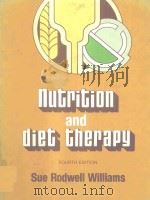
- NUTRITION AND DIET THERAPY FOURTH EDITION
- 1981 THE C.V.MOSBY COMPANY
-

- PHYSICAL PERFORMANCE FITNESS AND DIET
- 1955 CHARLES C THOMAS PUBLISHER
-

- NUTRITION AND DIET THERAPY
- 1956 FABER AND FABER LIMITED
-
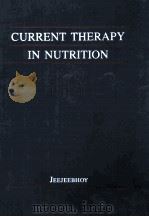
- Current therapy in nutrition
- 1988 B. C. Decker Inc.
-
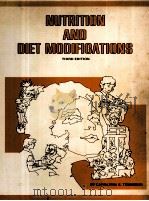
- NUTRITION AND DIET MODIFICATIONS THIRD EDITION
- 1980 DELMAR PUBLISHERS INC
-

- NUTRITION AND DIET THERAPY SEVENTH EDITION
- 1994 MOSBY
-

- Essentials of nutrition and diet therapy fourth edition
- 1986 Times Mirror/Mosby College
-

- Nutrition and development
- 1988 United Nations University
提示:百度云已更名为百度网盘(百度盘),天翼云盘、微盘下载地址……暂未提供。➥ PDF文字可复制化或转WORD
